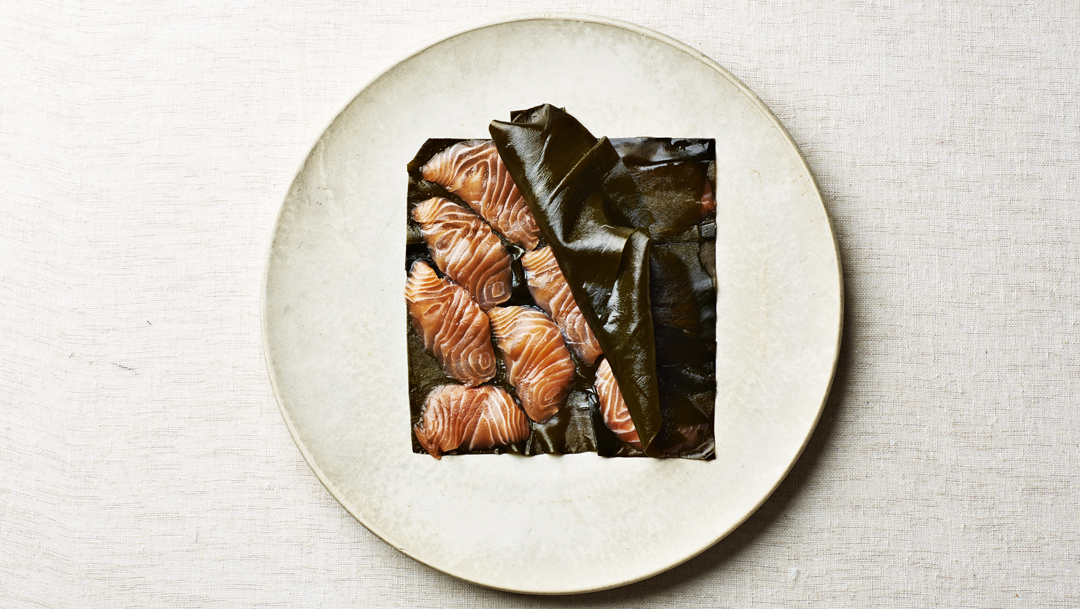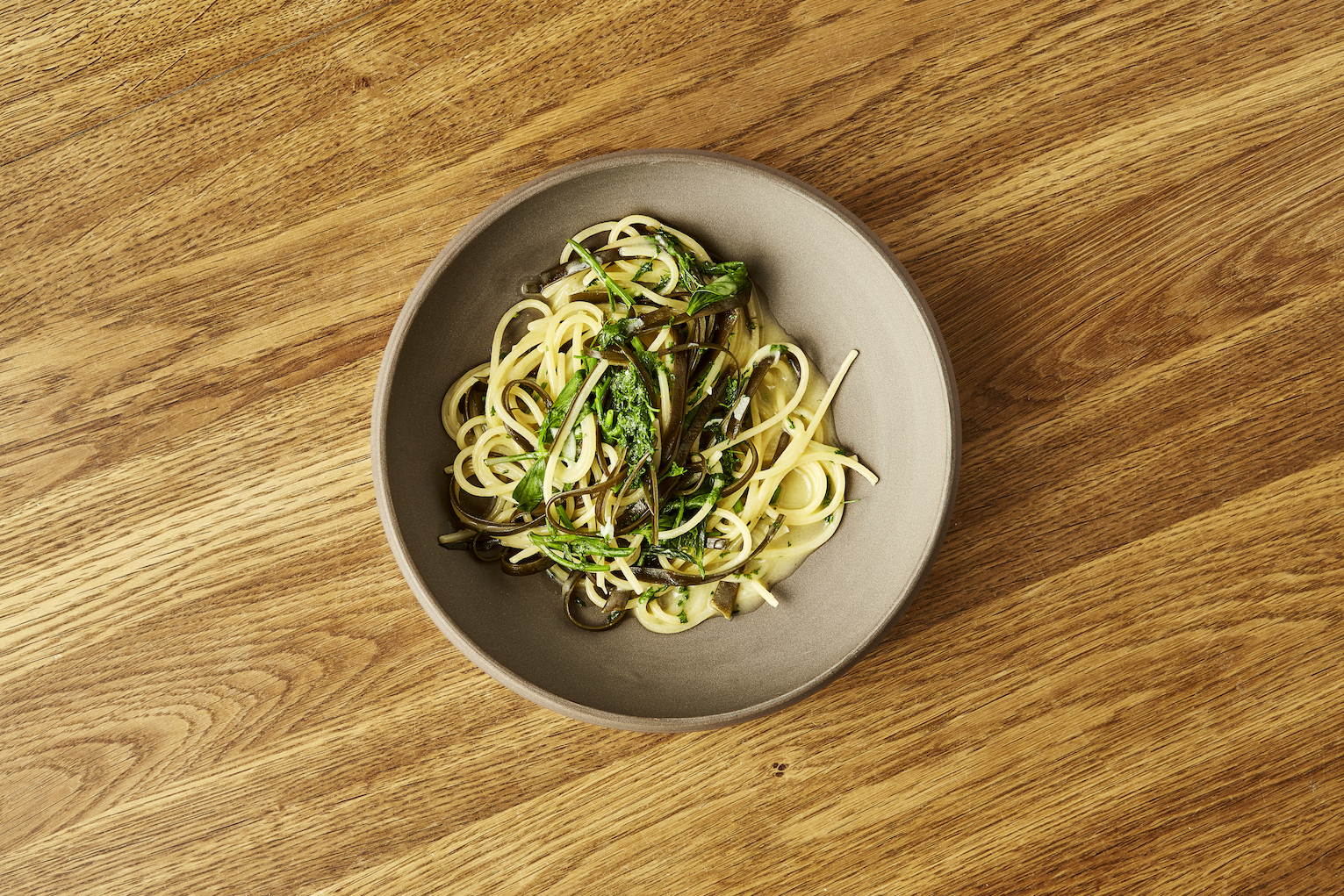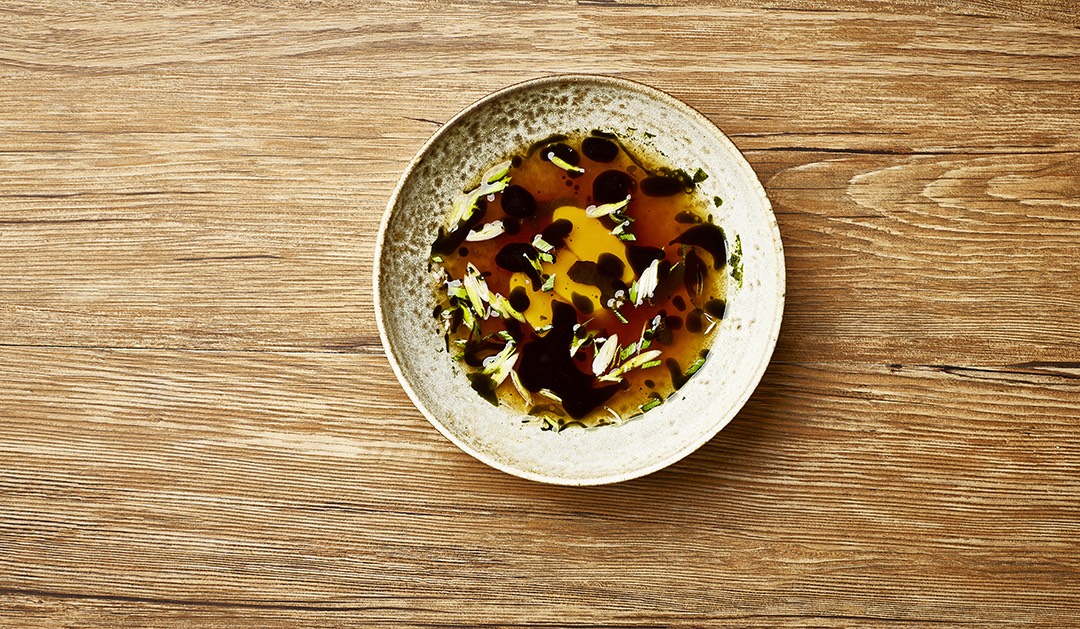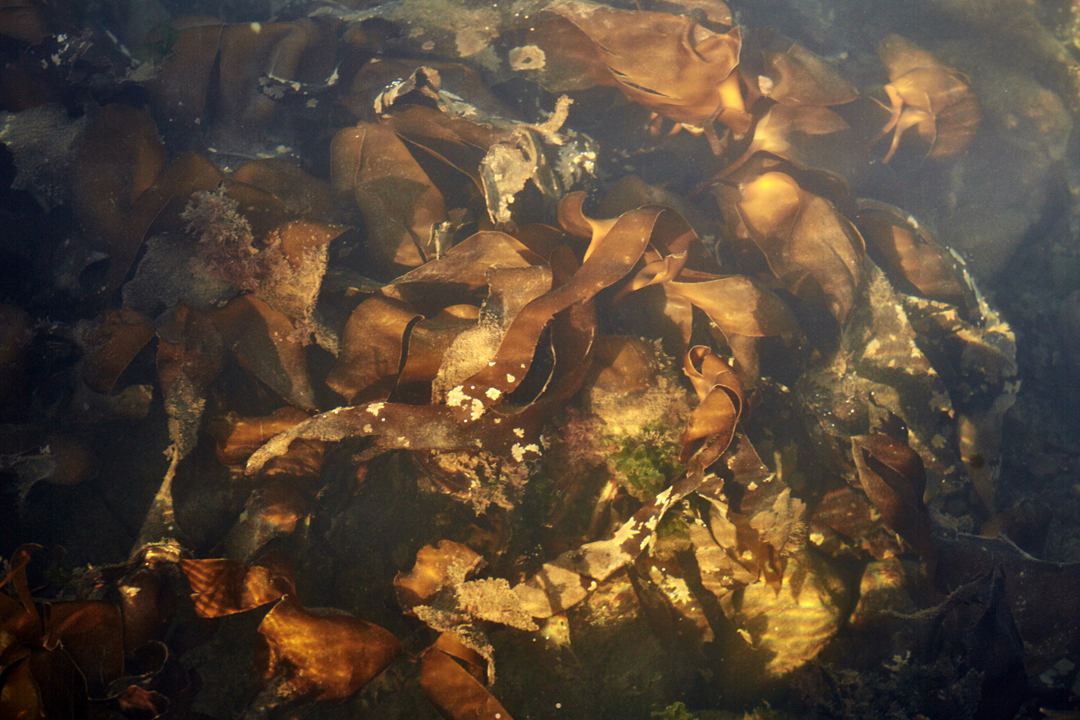
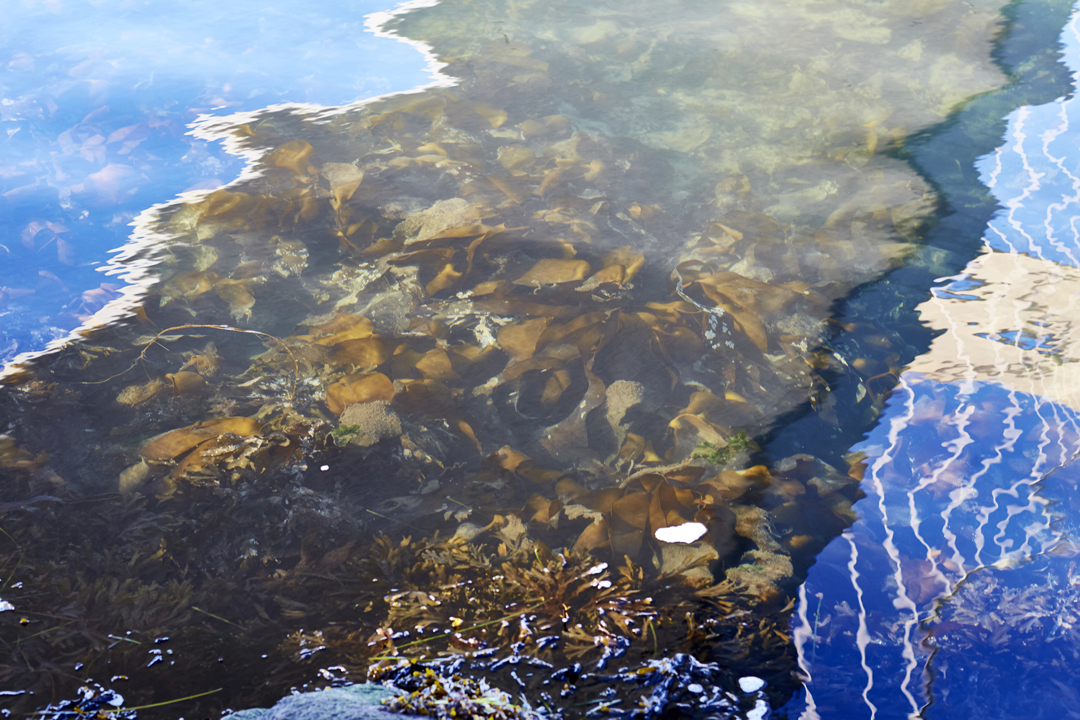
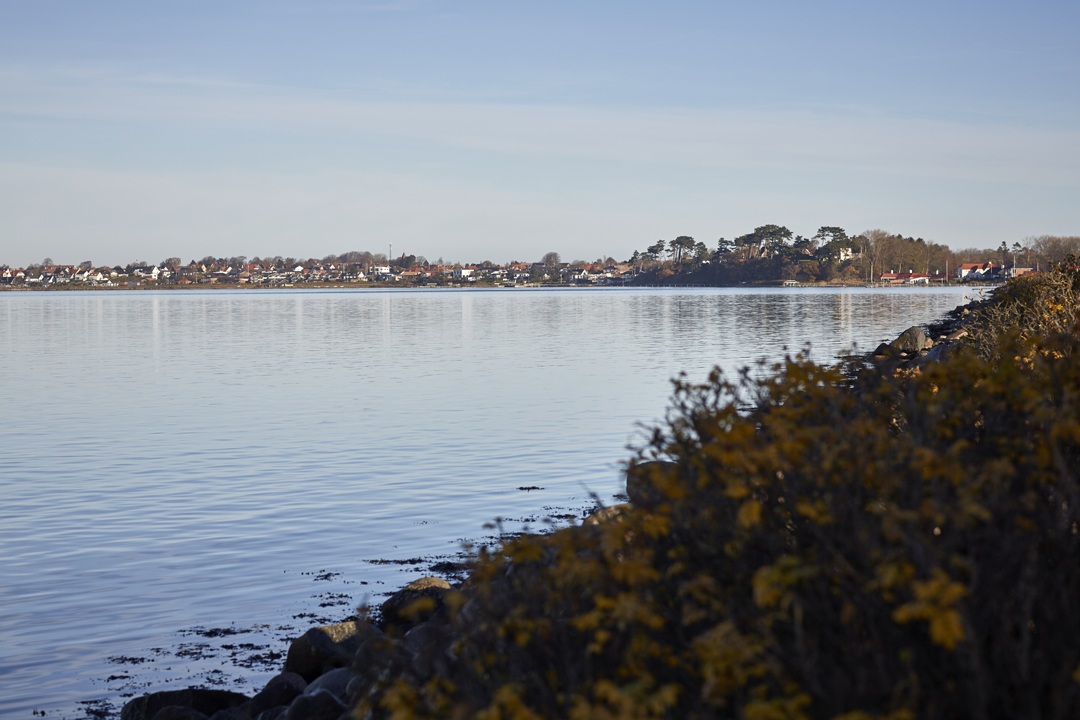
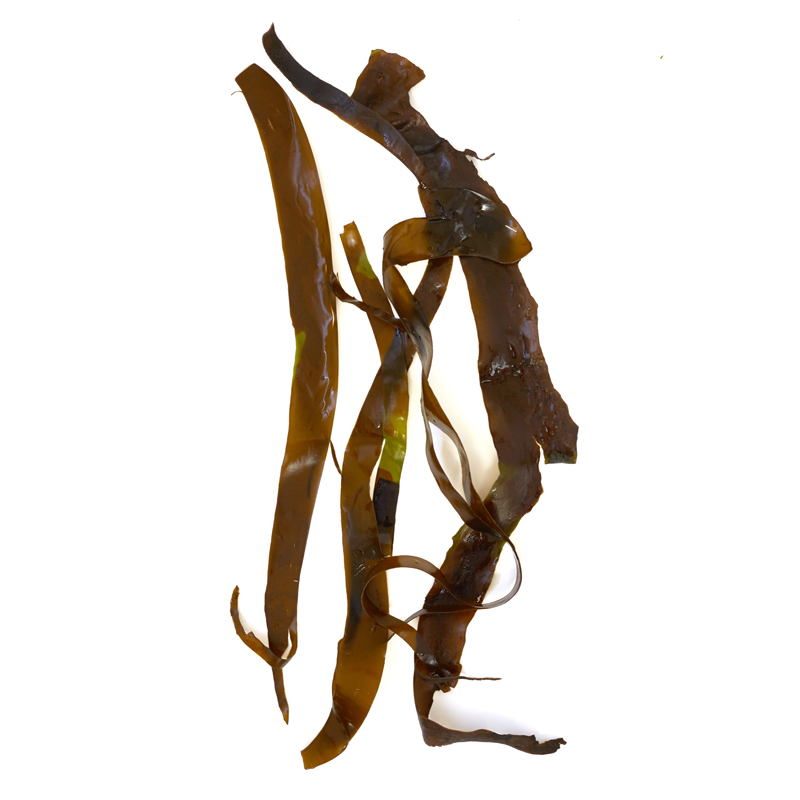
Oarweed
Historically, varieties of kelp like oarweed have been an important source of food for both humans and animals. Its unique flavor makes it a versatile ingredient that can be cooked in many different ways.
-
Where to Find It
Unlike many seaweeds that fare best in the intertidal zone or shallow water where there is plenty of sunlight, sweet kelp needs to be permanently submerged in water and therefore grows at greater depths—sometimes as far down as 30 meters. Sweet kelp also needs adequate salt levels in the water, so the closer you are to the less salty Baltic Sea, the less likely you are to find it. Sweet kelp often grows in bodies of water surrounded by large forests.
The beach.
-
When to Find It
Sweet kelp can be picked year round, but it tastes best in the spring.
Leaves: January, February, March, April, May, June.
-
How to Spot It
Sweet kelp produces a single long brown leaf from its stem, which is attached to rock. The light, ruffled leaf can grow up to three meters long and resembles moist leather.
-
How to Pick It
Sweet kelp grows from the bottom of the leaf, so the freshest parts will be found stem and leaf meet. When gathering sweet kelp, be sure to cut off the entire leaf above the stem so that a new leaf can grow.
Risk of misidentifying the plant
There is no risk of mistaking the plant for another dangerous or undesirable plant.


